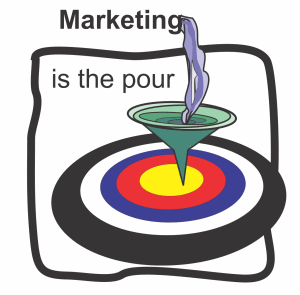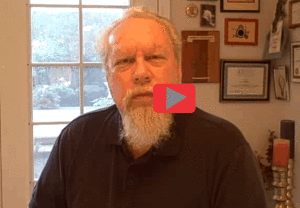“Go where they ain’t,” said Rob, the southern fried branding guru we lovingly call Bubba. 
Chris asked, “That is your great business development advice?”
“Yassuh,” said Bubba around a dinner roll slathered with butter. I’ll give you examples from every part of marketing ‘cause that is advice you can take to the bank.”
“Okay,“ I said, “if we use the seven P’s model of Marketing I’ll just set them up one at a time. Is that okay with you?”
“Bring it on, Watson” said Bubba, “and if any of y’all want to jump in, feel free.
“Prospect Viewpoint,’ I said, “out of all the people out there who buys or will buy your product or service and what do they think, feel and believe about it?”
Rick, our direct marketing expert said, “Let me take this one. If you really analyze both the demographics and the psychographics of buyers you’ll find that they have more than one reason for buying. Yes, one will be prevalent but reasons two and three are often just as viable as number one. You go where they ain’t by orienting your creative to one of those other reasons.
“Profitable Niche is next. I said when he finished. A niche is a way to minimize competition with a focused portion of a market that requires a product or service that is outside the mainstream either in the need it meets or the design of the product or service. “
Gail, the copywriter volunteered, “you know how the whole world is now into mobile? Well I have seen that work out really well for two industries not known for it. Our vet’s practice is all house calls. And our computer guy lately seems to live in our spare bedroom/home office.”
Kate asked, “Are the virus’s attacking again?”
“Don’t get her started.” Rick said.
“Positioning is the third item,” I said. It is how you differentiate yourself or your product or service.
Bubba cleared his throat and said, “I figure I oughta take this one ‘cause everybody confuses it with brand and names and logos and taglines and you name it. Positioning is how you tell people quickly and succinctly how our product or service is unique. The classic examples are: The Uncola for Seven Up or We try harder for Avis or when it absolutely positively has get there over night for Federal Express. All or part of it may appear in a tagline. It can be a product name. It will, overtime, be part of the brand.”
“Persona is next, I see it as the heart of any business, the operational strategies. It is a core of trust wrapped round by Product, Price and Passage (distribution) encased in your name. Any one of the key elements can take you where they ain’t. For instance: The Chronotherm (the world’s first automatic setback thermostat). Or how about a fixed price to get a Pilot’s license or to integrate reporting software into your corporate systems. Consider a vending machine in orthodontist offices to dispense the most common items used. TWo of those I helped put in place and they are killer!
“Promotion Anybody”
Chris said, “I’ll take it. The internet has changed things but mostly just added another channel. The easiest way to go where they ain’t is to use direct mail. Use has declined so it stands out. Yes, it costs more than e-mail but used in combination with on-line activities it can increase acquisition geometrically.
“Performance is next, I said, “this is the way you, your company product or service interface with the client/customer/user.”
Kate, our sales doyenne said, “Got it. Have humans answer the phone. Actually help people find a competing product. Provide content that actually helps. Listen to your sales force when they tell you what people are saying about you and competitive products. Make it easy to opt out. Basically just treat people the way you’d like to be treated.
“Perception is the last one,” I said. “Bubba will you do the honors since Brand is your baby?”
“Sho’ nuff. Brand is the sum total of all the ways you or your company, product or service wind up on folks’ radar. What you want to have happen is for folks tell others Look what Mama gimme!”
The Takeaway:
Be different. You can do it with a name, a product, a distribution channel, pricing, delivery, after sale support, positioning, finding a niche. The better you understand your customer/client/user, the easier it will be.
Jerry Fletcher’s blog recaps conversations with clients, prospects and an unruly mob of business development professionals. They discuss what’s new, what’s old, what’s good, bad and ugly plus creative thinking to find what works. Jerry Fletcher is the ringleader and “Watson” of the dialogue.
Jerry has been researching and implementing small business marketing that builds businesses, careers and lives of joy for 25 years as President of Z-axis Marketing, Inc. Learn more at www.JerryFletcher.com
Schedule a personal appearance. Jerry speaks internationally on Networking, Marketing and Contact Relationship Magic. www.NetworkingNinja.com










